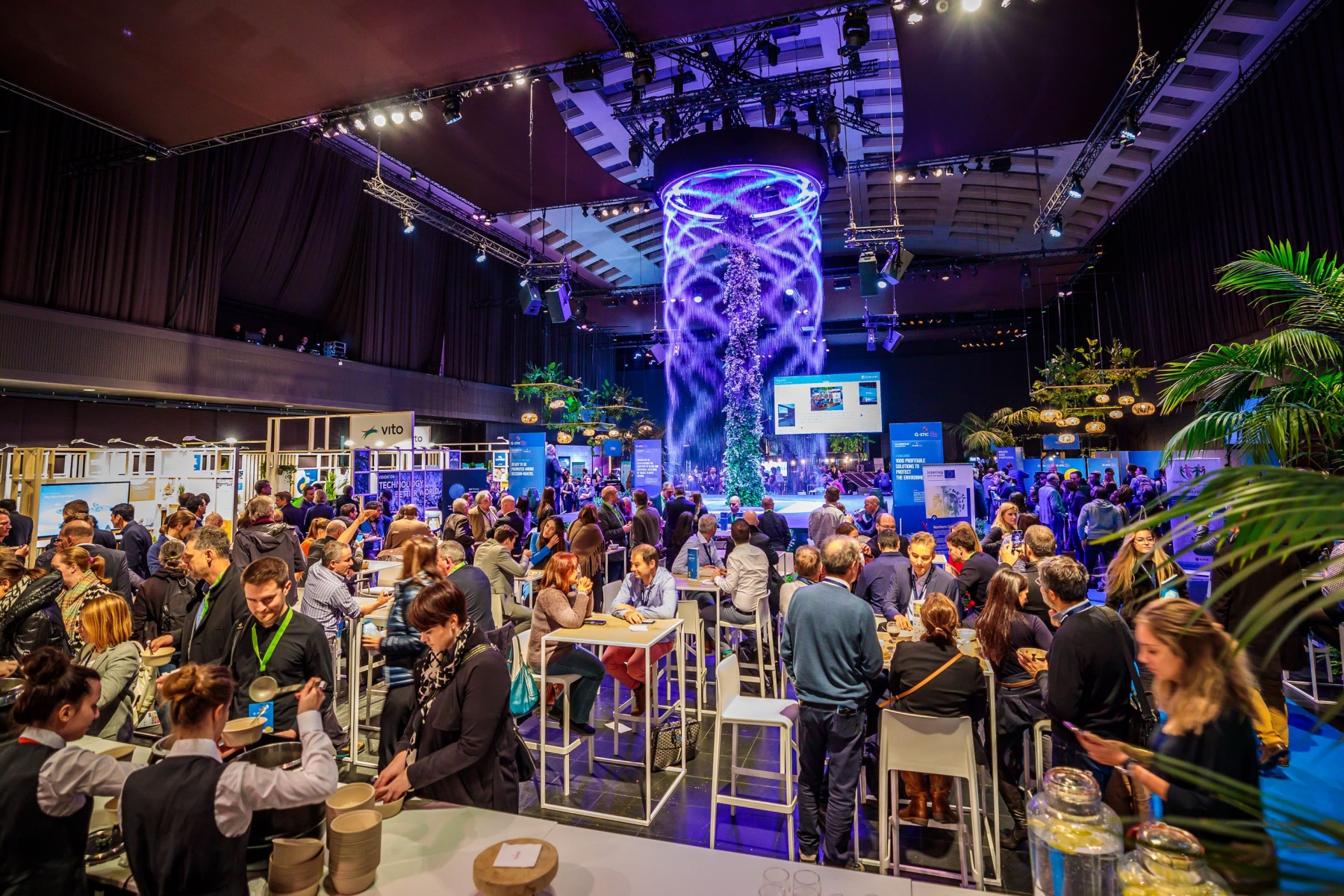Spearheading technological innovation for the SDGs
Against a backdrop of growing urgency, the G-STIC Conference of 2019 initiated the development of a living library of integrated technological solutions that can help us achieve the Sustainable Development Goals (SDGs) and climate goals.

Exploring market-ready solutions
The conference sessions on climate, education, energy, health, oceans, and water dived into concrete examples of market-ready solutions. In addition, participants discussed the levers of change needed to market them at scale under different socio-economic and geopolitical conditions. In doing so, G-STIC helped pave the way for building a tool that sensitizes policymakers at all levels and assists them in evaluating the transformative potential of technological innovations for the SDGs.
Achieving the SDGs with business-as-usual is not possible
Four years after the United Nations launched the Agenda 2030 and its associated SDGs, progress is lacking.
The figures reported by various specialised UN agencies are quite alarming. Essential health services are out of reach for at least 50% of the world’s population. 1.5 billion people still do not have access to basic sanitation facilities. Some 840 million people remain without access to electricity. Moreover, droughts, floods, heatwaves, extreme weather conditions and sea-level rise are felt harder and sooner than expected.
These are clear signs that achieving the SDGs with business-as-usual is just not possible, and that breakthrough technological innovations for the SDGs are of vital importance.
Building a living library of technological innovations for the SDGs
The library will provide an overview of transformative solutions underpinned by practical assessment criteria embedded in science and best practices. This library is indispensable for policymakers developing Science, Technology and Innovation (STI) roadmaps for the SDGs. At the same time, captains of industry can use this library for exploring new business opportunities.
Whereas previous G-STIC conferences helped put technological innovations for the SDGs on the international policy agenda, the G-STIC Conference of 2019 took the next big step. It initiated the development of a living library of market-ready technological innovations that can help us achieve the SDGs and climate goals.
Deploying technological innovations for the SDGs on a sufficiently large scale
The deep dive sessions on climate, education, energy, health, oceans and water during the G-STIC Conference of 2019, highlighted real-life examples of technological innovations for the SDGs that can already be applied today, and that are economically feasible. Just to name a few, these include
- desalination installations to counterbalance droughts and freshwater shortage,
- modelling and decision support tools for smart district energy planning,
- smart glasses to make high-quality healthcare accessible and affordable for patients at remote locations.

The deep dive sessions also looked into the infrastructure, financial incentives, regulations and legislation that are needed to deploy these technological innovations on a sufficiently large scale to bring about real change.
Forwarding actions and programmes in support of the SDGs
The G-STIC Conference of 2019 also proved to be an action forum with a series of deal-making and business development events to forward the implementation of market-ready technological innovations for the SDGs.
The G-STIC Industry Night shed light on how to turn sustainable development challenges into exciting business opportunities and offered plenty of networking opportunities with influential policymakers, investors, and captains of industry. Keynote speakers highlighted emerging and rising trends in the industry and testified how businesses can drive growth and productivity while contributing to achieving the SDGs.
Young people could showcase smart, original and innovative solutions and business concepts during the G-STIC Youth Challenge, a competition organised by IEEE Entrepreneurship in coordination with the UN Major Group for Children and Youth.
The Copernicus Hackathon allowed small teams of people with different backgrounds and expertise to collaborate on the development of software prototypes based on Copernicus Earth Observation Data.
Matchmaking and pitching events provided companies and research organisations looking for investors or research cooperation with an excellent opportunity to showcase their market-ready technologies in front of an international expert audience.
Evaluating the transformative potential of technological innovations
All sessions and events of the G-STIC Conference of 2019 shared a razor-sharp focus on market-ready technological innovations for the SDGs. The living library will share this focus and provide an overview of transformative solutions underpinned by practical assessment criteria embedded in science and best practices. This approach will make it into a tool to spearhead technological innovation for the SDGs, change markets at scale and inspire societies to move towards more sustainable development patterns.
In the next phase, we plan to further develop scientifically underpinned assessment criteria into a framework that assists governments and corporations in evaluating the transformative potential of technological innovations for the SDGs. Ultimately, this framework will make it possible and practical to quantify how technological innovations can contribute substantively to the implementation of one or more specific SDG targets.
